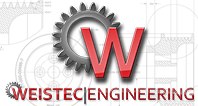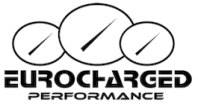Results 1 to 4 of 4
-
10-26-2019, 02:53 PM #1
Variable A/R BorgWarner EFR turbocharger housing?
This is an interesting development from TurboSource. Now variable A/R (Aspect Ratio) in a turbocharger is nothing new as that is exactly the idea behind VTG (Variable Turbine Geometry) turbochargers which Porsche is well known to use in production cars.

VTG's utilize variable vanes to achieve their goal, not a variable housing.
The idea here is to ultimately improve response without sacrificing top end punch.
TurboSouce explains the premise well:
If this sounds a bit confusing you are not alone and who knows if it will work as advertised and be a reliable setup. It seems tuning will be more complex and a standalone engine management system is recommended.The TurboSource Variable A/R Turbine Housing is designed to increase the responsiveness of the EFR turbocharger lineup even further. This external waste-gate configuration housing is designed to lower the boost threshold by 600-800rpms. Most enthusiasts are torn between the ultra responsiveness of the 7670 turbocharger, and the higher peak RWHP numbers of the larger b2 frame turbochargers( 8374 through 9274). The goal here is to combine the best of the both worlds through increasing shaft speeds in the lower RPM regions( below 4K rpms for most smaller displacement engines), while being able to deliver the high RPM power of the 62-68mm B2 frame EFRS( 8374, 8474, 9174, and 9274).
The beauty of the EFR turbochargers is already dramatically increasing how wide the powerband is by the use of the Gamma-TI turbine wheel, which is half the weight of the Inconel found is most traditional turbine wheels. Less mass, means shafts speeds increase even easier, and your power band starts faster. With the valve in the open position, all of the exhaust energy is forced through half of the turbine volute, increasing exhaust velocity dramatically. This is similar to a very small turbine A/R. As RPM and boost pressures increase one will outflow the smaller turbine a/r, or in this case one side of the turbine volute and dramatically increase pre turbine back pressure. Too much pre turbine back pressure will effectively choke the engine, and the torque curve will nose over. This is where one is able to close the valve, doubling the turbine A/R, and allowing the engine to flow properly, reducing pre turbine back pressure.
This turbine housing is cast with twin 1/8 NPT ports, one per volute, to measure pre turbine back pressure. This with the use of the EFR shaft speed sensor allows the user to dial in the optimum valve close timing( both volutes open). This will be achieved via a boost control solenoid with the mechanical actuator option, or directly with the electronic actuator option( not available yet). A standalone ecu is ideal to control the variable housing( plot emap vs valve opening). Those without can just change spring pressures inside the mechanical actuator option to achieve desired close timing vs IMAP(intake manifold pressure) only.
An interesting development to follow, certainly.
Open versus closed position:The ideal use of this housing is for fully divided twin-scroll EWG turbo manifolds. With the valve in the open position( only one side of the volute open) the exhaust energy collects right behind the T4 flange, when the valve closes the entire system returns to a fully divided twinscroll system. A properly designed twin-scroll system will make more power as cylinders experiencing high pressure pulses are not allowed to force exhaust into cylinders experiencing low pressure pulses. This lowers engine VE, as more unburnt gases remain in the cylinder after the exhaust stroke.

-
10-27-2019, 11:55 AM #2
Like a quick spool valve, but better. Especially since this still provides the benefit of a fully divided twin-scroll setup.
-
10-27-2019, 03:46 PM #3
-
07-04-2020, 08:53 PM #4
 Member
Member

- Join Date
- Apr 2017
- Posts
- 10
- Rep Points
- 32.0
- Mentioned
- 0 Post(s)
- Rep Power
- 0









 Quote
Quote













Hey...
Let's point and laugh at Slaphappypal